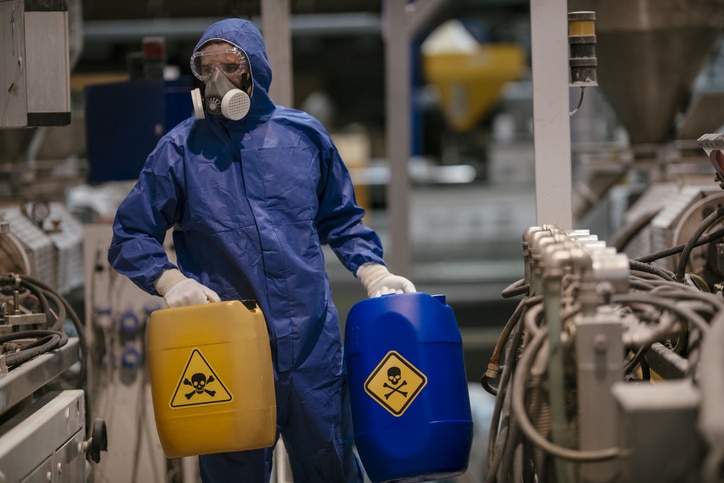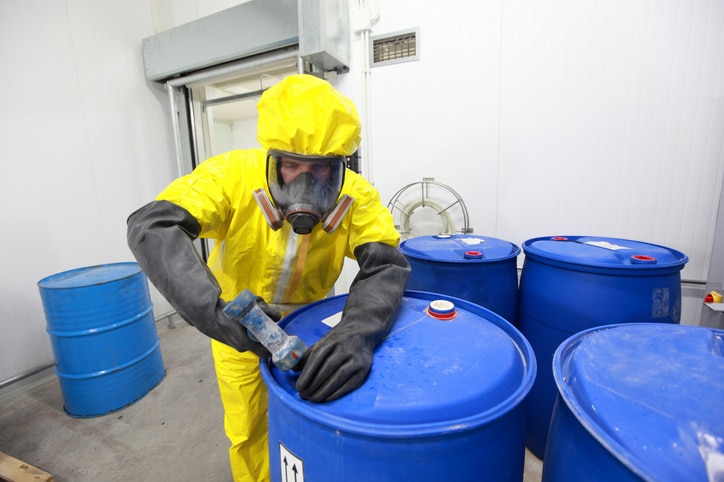Hazardous chemical exposure is a serious health risk for workers in many industries. For workers to be adequately protected from these hazards, industrial business owners and management teams need to understand and assess the risks associated with each type of chemical.
Having a well-rounded idea of what chemicals can do, and how to reduce the risk in your workplace is vital to the safety and security of employees. With the right assistance, professional help, and regular hazardous materials assessments, you can assure that your work environment is running as smoothly and safely as possible. To give you the best understanding possible, in this blog post, we will explore some of the most common health risks associated with hazardous chemical exposure.

Acute Health Effects
The most immediate effects of hazardous chemical exposure are known as acute effects. These can include irritation, skin problems, respiratory symptoms, asthma-like symptoms, and even death in extreme cases. In addition, certain chemicals can cause long-term damage to organs such as the liver or kidneys if they are inhaled or ingested. Long-term effects can also include cancer or other chronic illnesses. By getting potential dangers reviewed by a hazardous materials consultant regularly, you can reduce the possibility of acute health effects for your employees.
Chronic Health Effects
Chronic health effects are those that develop over time due to repeated or prolonged exposure to hazardous chemicals. For example, workers who handle solvents or other volatile organic compounds on a regular basis may develop cancer or neurological problems over time due to their repeated exposure. It is important for safety professionals to understand how long-term exposure can affect an individual’s health so that appropriate protective measures can be taken, such as hazardous materials assessments and safety audits.
Carcinogenic Effects
Some chemicals have been linked to an increased risk of cancer in exposed individuals. These chemicals are classified as carcinogens and often require special handling procedures to minimize their risk of causing harm. Examples of carcinogens include asbestos fibers, benzene, and formaldehyde. Safety professionals should get the help of qualified hazardous materials consultants to assess any potential sources of carcinogens in their work environment and take steps to minimize worker exposures whenever possible.
Final Thoughts
Hazardous chemical exposure poses a serious risk for workers in many industries, and it is essential for safety professionals to understand these risks so that they can adequately protect their employees from harm using qualified help and conducting regular risk assessments. By understanding the acute and chronic health effects associated with various chemicals as well as any potential carcinogenic risks, safety professionals can create effective strategies for minimizing worker exposures and protecting employee health and safety.
With a background in Alberta’s Occupational Health & Safety Commission and professional project management skills, our qualified staff can provide reliable handling of air quality and industrial hygiene from initial industrial inspection all the way to remediation programs. Whether just for a permit, or in-depth air quality control, we can help. Feel free to reach out and secure air quality and hygiene requirements for your building.
